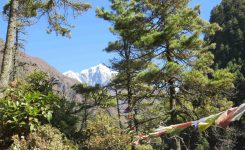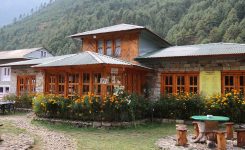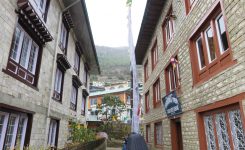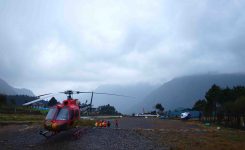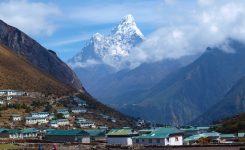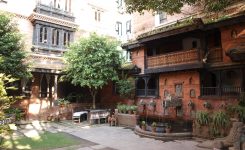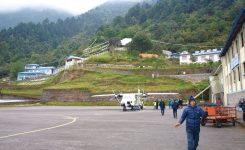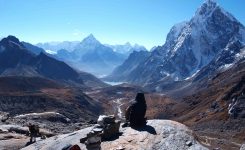Everest Base Camp, Three Passes Trek, Travel
Namche Bazaar to Tengboche, Everest Base Camp Honeymoon (Day Five)
DESTINATION: Tengboche
ELEVATION: 3,867 meters
ELEVATION GAIN: +367 meters
DISTANCE: 9.2 km (4 hours of walking)
OXYGEN: 64% of sea level
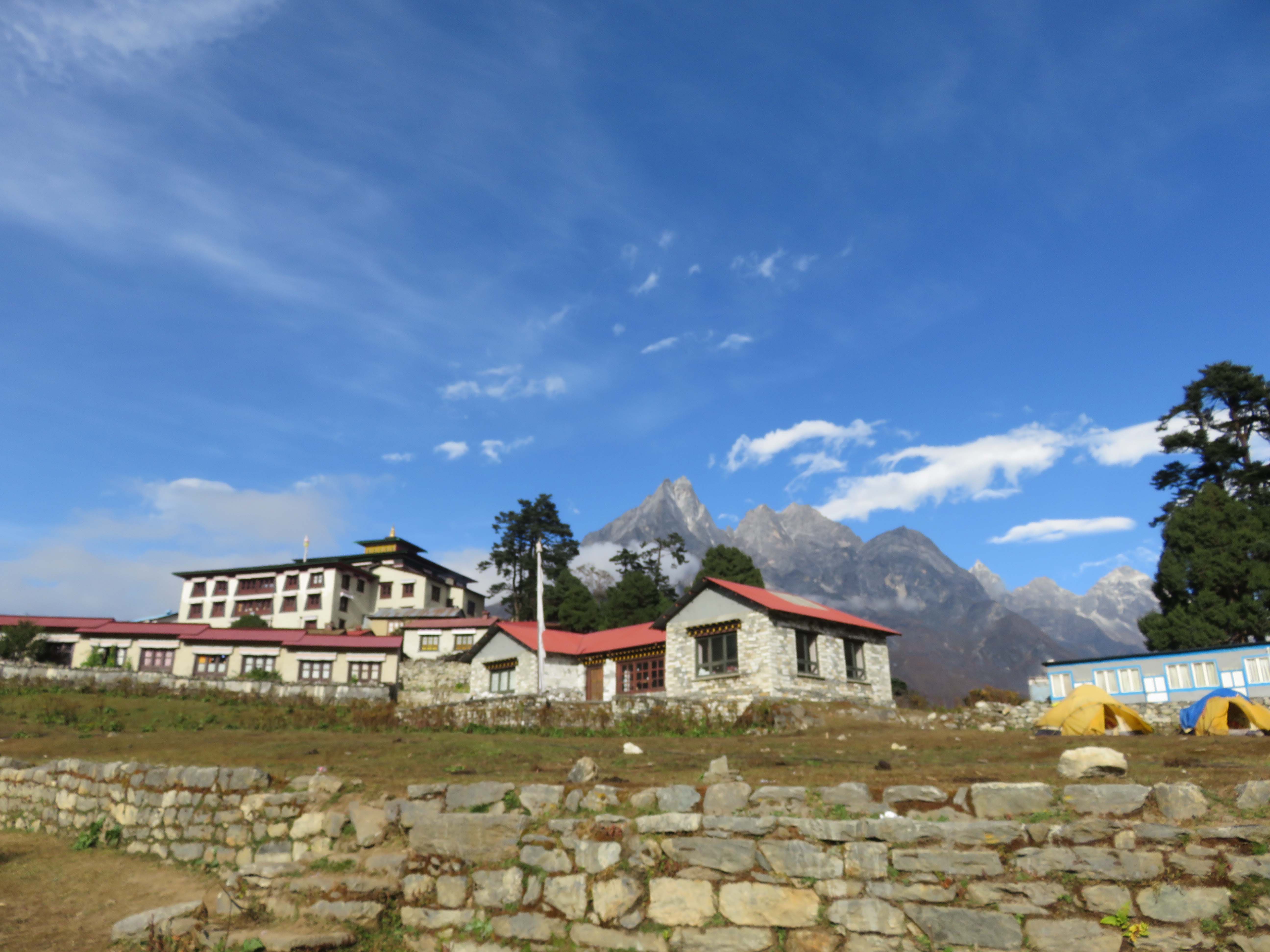
Tengboche (3,867 m) is a small village in the Khumbu area. Surrounded with unparalleled views of the Himalayan mountain range and Mount Ama Dablam is the Buddhist Monastery of Tengboche. It’s the largest monastery in the Khumbu region, and it attracts a lot of attention from everyone trekking to the Everest Base Camp. You can read more about it on this Nepal Tourist site.
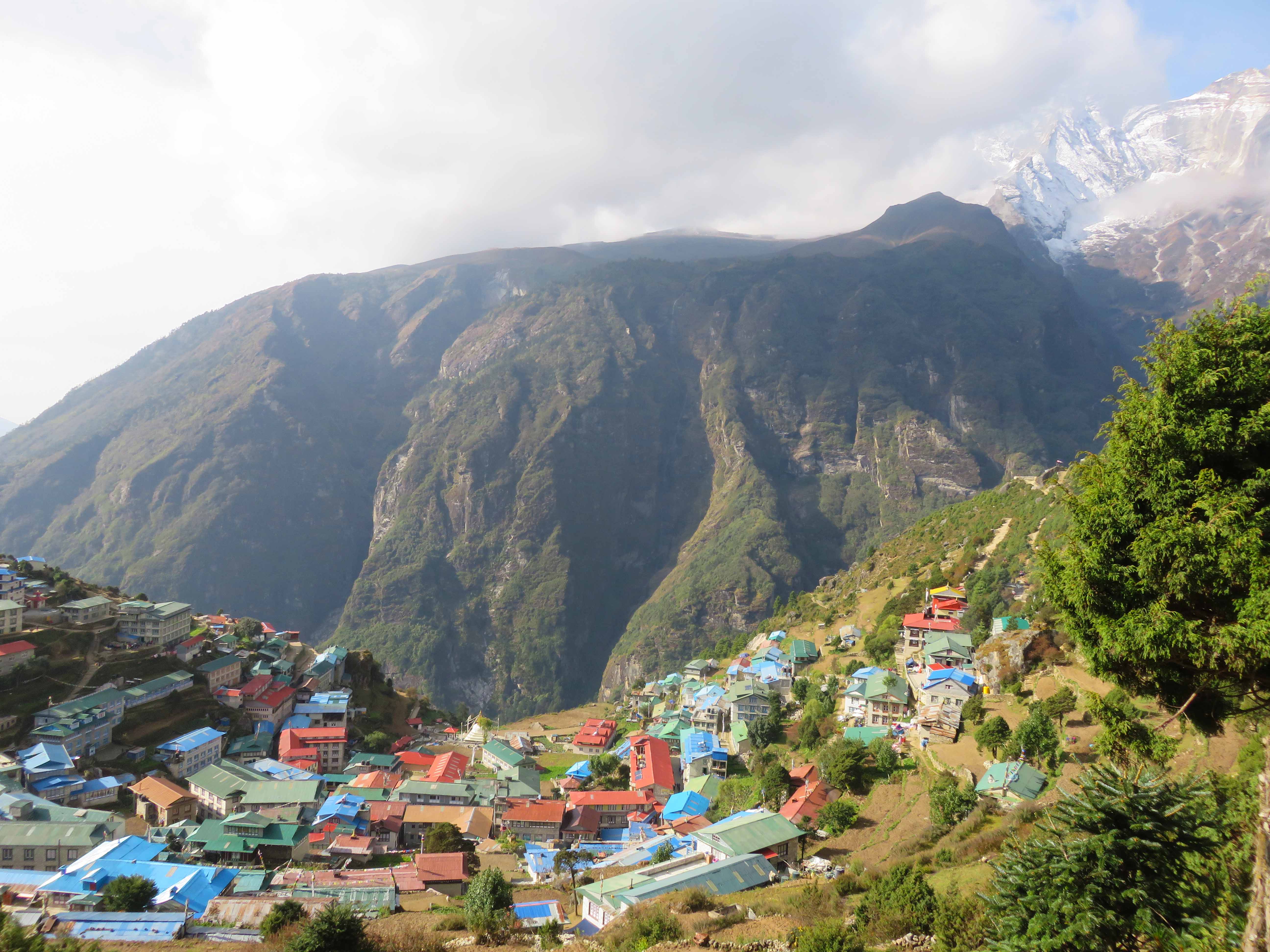
On the morning of our day five of the Three Passes Trek, we woke up early, excited about the day ahead and happy that our backpacks got lighter, and we have a room waiting for us upon our return to Namche Bazaar. Sitting at 3500 meters high, Namche is the highest elevation I’ve ever been exposed to before this trip (highest being at 3068 meters in the Austrian Alps). Given the altitude, I was beginning to feel a little out of breath.
The distance from Namche Bazaar to Tengboche is about 9.2 km, and at a healthy pace would take about four hours to get to Tengboche. However, since I had neglected the recommended training routine before we departed from Toronto, I was beginning to feel the decreased levels of oxygen. At Namche Bazaar, you only get 66% of the oxygen available at sea level, and when you get to Tengboche, that percentage drops to 64%.
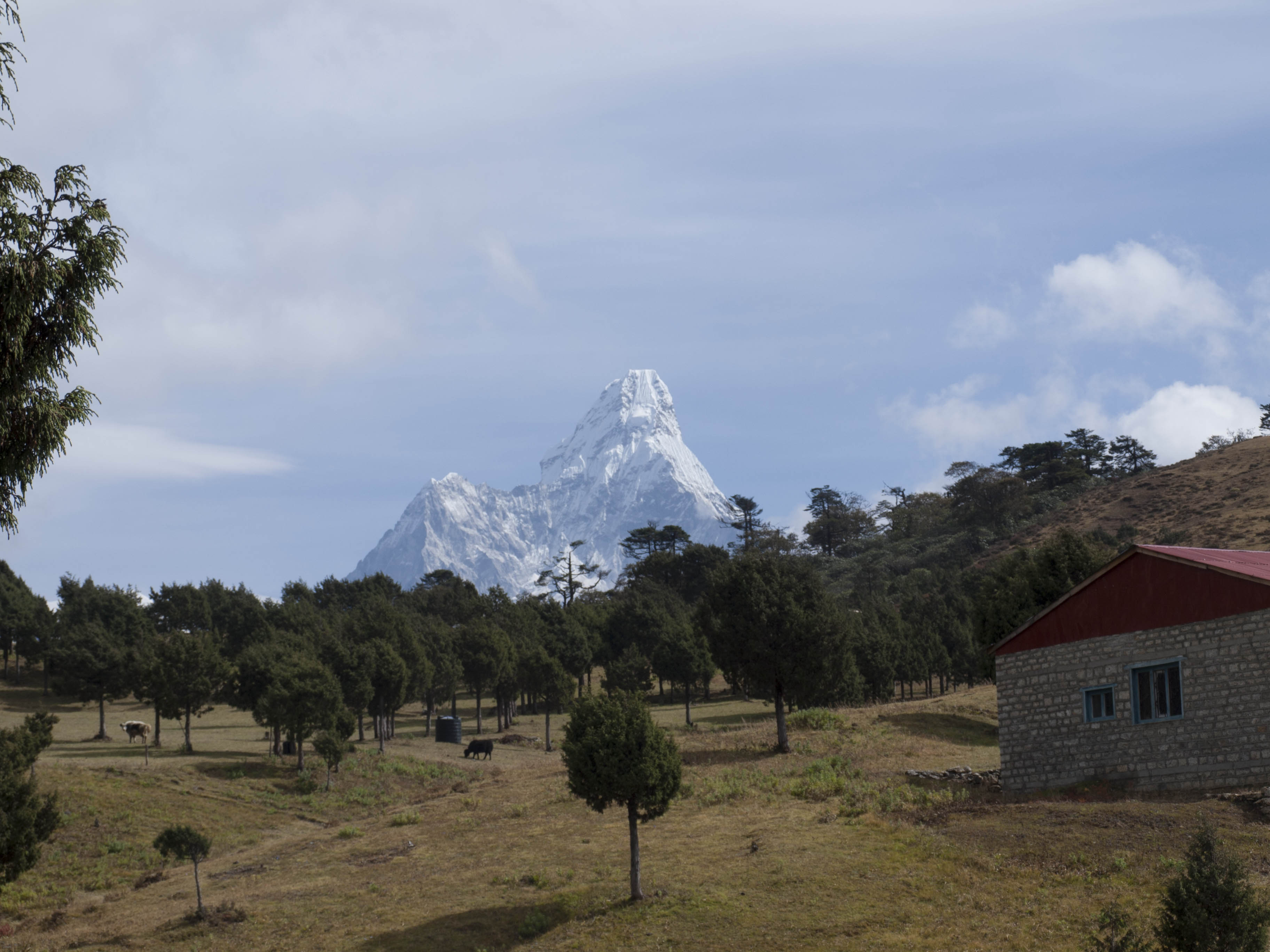
The walk to Tengboche from Namche Bazaar goes through some of the most scenic paths I’ve ever seen, which helps fight the struggles of carrying a heavy backpack, jetlag, and thinning air that makes walking three steps up feel like a strenuous workout. It also gets pretty hot in the daylight, so a sunhat is a wise purchase.
At one of our lunch stops, we overheard a guide telling his group to cover up their ears and wear a sunhat above 4000 meters as the wind is cold and dry, and the sun is intense. Polarized sunglasses are a must. When we finally got to Tengboche (around four in the afternoon), the clouds already rolled over the village, so we didn’t get the glorious views of Ama Dablam and the surrounding mountain range.
When you travel without a guide, you get more freedom to go at your own pace and make your schedule. The downside of that, though, is that you occasionally struggle to get accommodation at the nicer places.
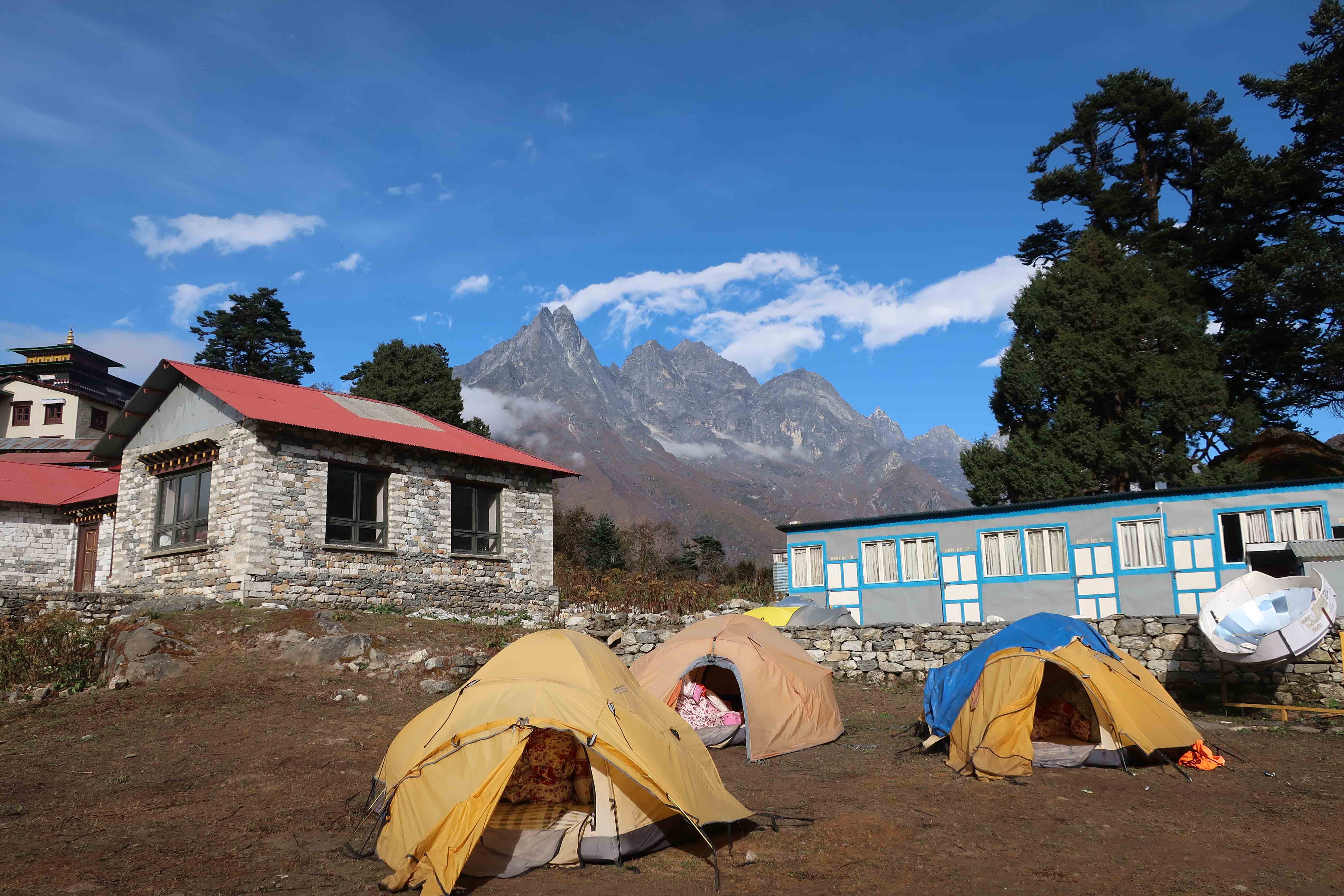
Most EBC trek groups stopped at Tashi Delek and the Himalayan lodges, but when we got there, they had no more rooms available, so we stayed in a lodge next to the Bakery. This one had only the outdoor shared toilet and shower (that was the only time we stopped in a lodge with no toilet indoors). The trick is always to arrive early so that you have a choice of a teahouse, but that’s not always possible. The teahouse we stayed at here wasn’t the greatest, but we were only there for one night.
Tengboche was the first stop after Namche Bazaar, and I noticed that many guidebooks mentioned that civilization sort of ends when you leave Namche. From my experience travelling in October 2018, I observed that this statement is half right. Based on all the comments of how “basic” the living conditions will get after Namche, I was a little down on the way up to Tengboche, expecting the worst. However, throughout our Three Passes Trek, I’d say I was pleasantly surprised. You don’t get five-star hotel luxury, of course, but it’s not that bad either. Here’s what I’ve learned on our trek:
What to expect after Namche Bazaar
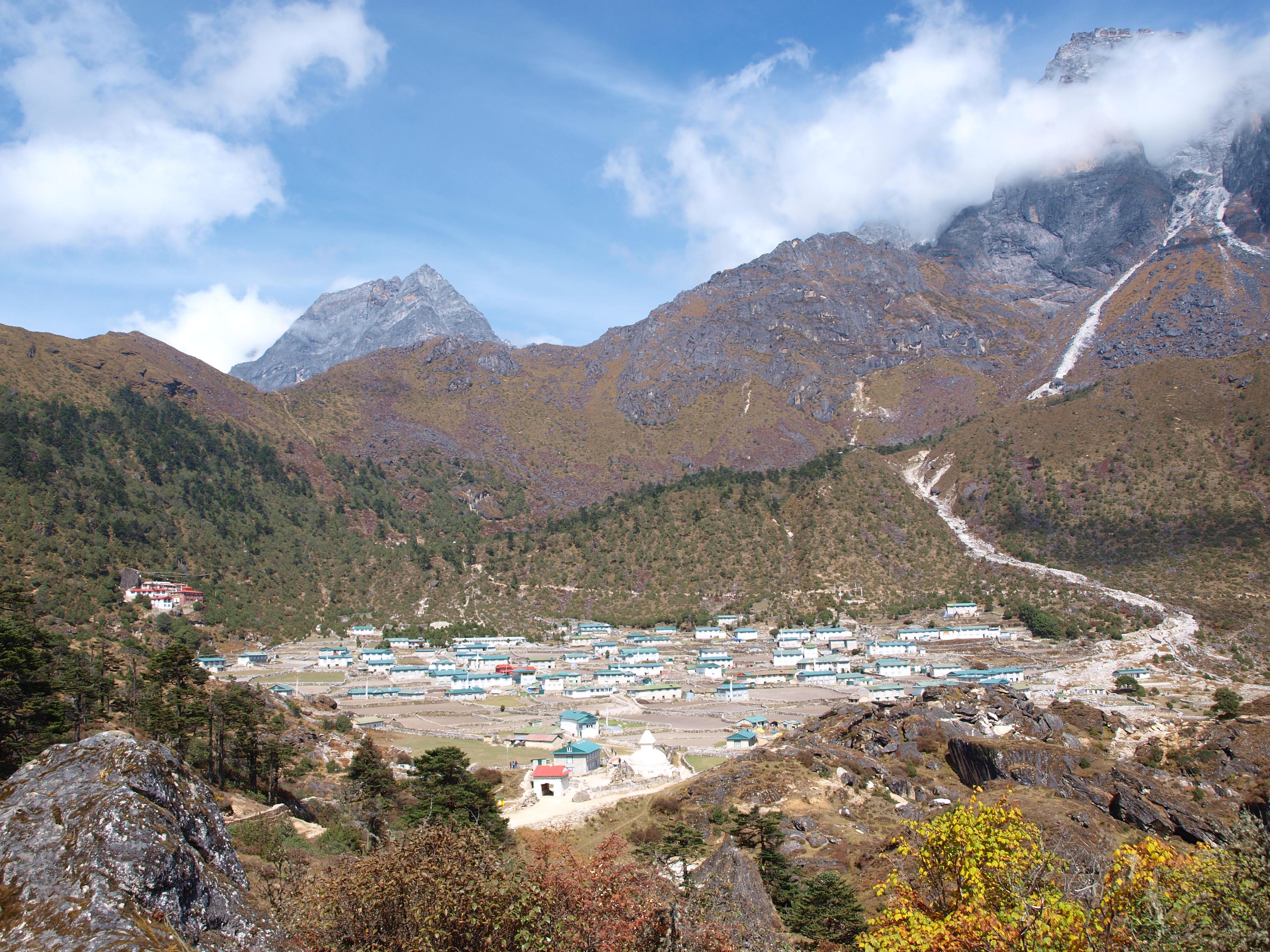
No flushing toilets on the EBC trek
This one is quite obvious, as you travel higher in the mountains, some things do get more basic. The flushing system is a bucket of water next to a squat toilet. However, the real struggle is finding a bathroom that has a toilet seat. True story: at a few lodges, the owners would “showcase” their western toilets and didn’t realize that we also need a toilet seat.
Teahouse rooms get more basic
There’s no heating in any of those rooms after Namche (unless you’re staying in a fancy resort, which I can’t tell you much about), and you get pretty much a bed with a pillow, a thick blanket, sometimes with a garbage can, and some hangers on the wall. A good sleeping bag is a must for this trek. I can’t speak for other seasons, but it would get pretty cold in our room (not below zero though, maybe 10 C or so). My sleeping bag is MEC Cassiopea for women, and it was great; I didn’t feel cold at all, getting out of it in the morning was not a treat for sure.
There are hot showers on the Everest Base Camp trek
I read many blogs on showering on the Everest Base Camp trek, and a lot of them suggested that there won’t be many showers and that if you do manage to find one, it’ll be lukewarm at best. Both of these statements were incorrect. Almost every lodge we stayed at offered a hot shower (it is expensive as it ranges between 500 and 700 rupees, but you do have the option). We did hear guides tell their groups not to shower to avoid getting sick.
The water in those showers is hot, sometimes a little too hot even. They’re gas heated, so it’s hard to regulate the temperature, so the water is around 49 – 51 C, it’s hot, but it’s a good reward after a challenging hike. One thing to remember though, is that it gets pretty cold as soon as the sun goes down, so try to take showers when the sun is still out and then dry your hair in the common area next to the heater.
Some teahouses offer laundry service
We haven’t used this option, but you can pay at your lodge to wash your clothes, or you can do it yourself during the day when it’s hot and sunny. The main thing is to have quality, quick-drying clothes. I saw a sign at one of the lodges saying it’s 100 rupees per 100g of clothing – they go by weight, I believe, but don’t quote me on that, as we didn’t use this option.
You can buy Wifi on the Everest Base Camp Trek
You have an option of buying a 1GB card for 600 rupees that only works one day and only in that village or 10GB for 2000 rupees that works in all the villages and works until you run out of data. We only got WiFi a few times when we had to stay an extra night to acclimatize and were bored. It’s painfully slow, but it works.
You can charge your phone at any teahouse (for a fee)
This one is simple; you don’t need an adapter either as they have it all figured out. I just brought my North American iPhone charger and had no problem with charging my phone. A full battery charge in higher up villages is about 500 rupees, and less at lower elevations.
Tengboche’s Monastery
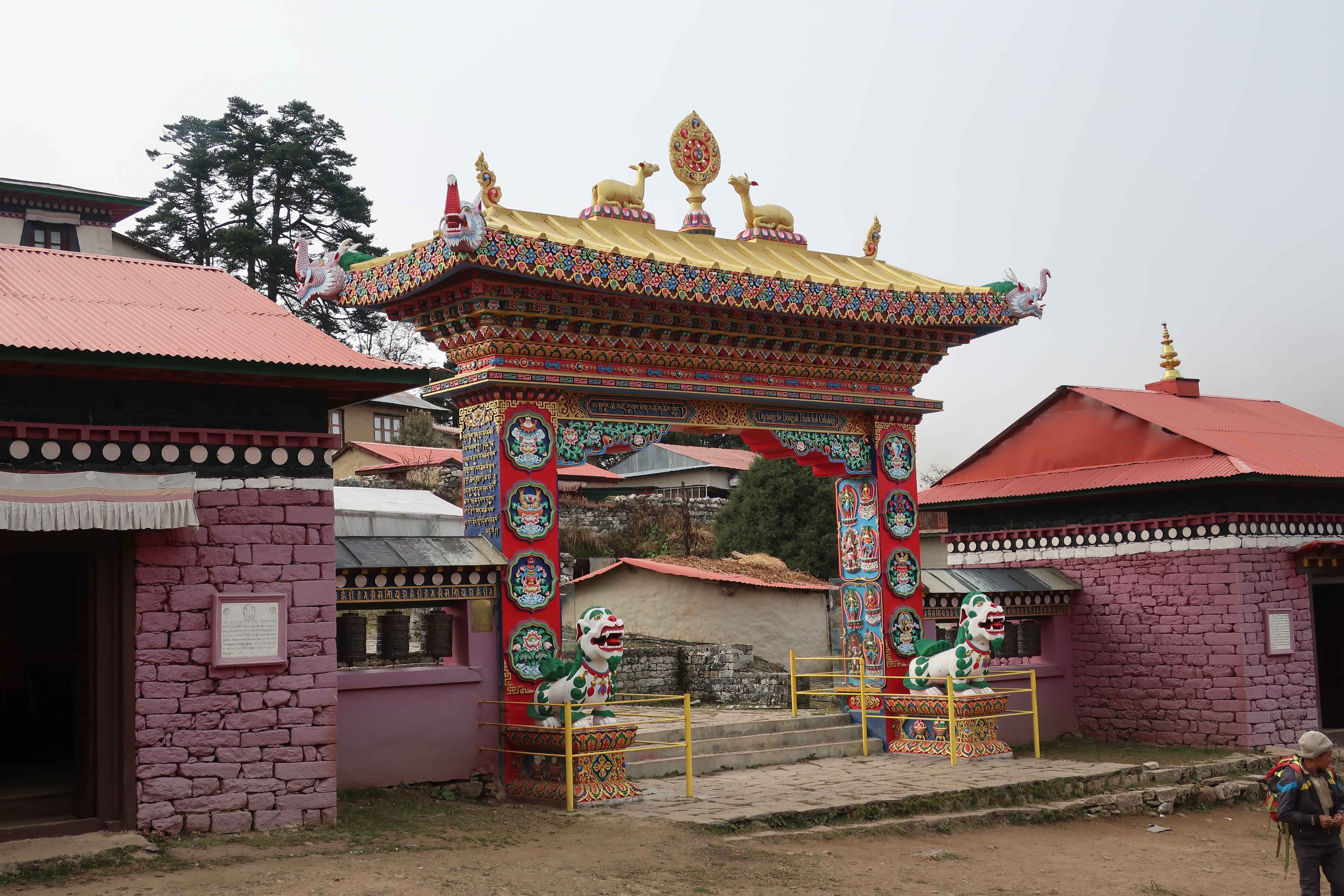
Tengboche is a beautiful village with a fantastic bakery (you have to try their apple pie) and the largest Buddhist monastery in the Khumbu region. You can walk in and take photos of a monk working on a mandala if you get to see one. It’s all donation-based (pay and you can take a picture, despite the sign on the entrance that no photos are allowed).
At the monastery, the monks will bless you for your journey up to the EBC. We didn’t know this was a thing, so the guide that travelled there with a couple of trekkers explained how it works: the monk offers to pour the holy water in your hands, and you are to drink it and wipe the leftovers on the crown of your head (no headpiece). As we were worried, drinking the holy water could upset our stomach (as it’s not purified), we only took a tiny sip and poured the rest on our heads.
After a tour of the monastery and hundreds of photos, we headed to our teahouse to have dinner. The next morning we were headed to Pangboche, a home to Solukhumbu’s oldest Buddhist monastery that is also home to a Yeti’s remains.
Read next:
Everest Base Camp Trek Series:
View All Posts
- Day 1 – Toronto to Kathmandu
- Day 2 – Exploring Kathmandu
- Day 3 – Kathmandu to Lukla
- Day 4 – Namche Bazaar
- Day 5 – Namche Bazaar to Tengboche
- Day 6 – Tengboche to Pangboche
- Day 7 – Pangboche to Dingboche
- Day 8 & 9 – Dingboche to Chuchung
- Day 10 – Chuchung to Lobuche (over the Kongma La Pass)
- Day 11 – Lobuche (and the Italian Pyramid)
- Day 12 – Gorakshep to Everest Base Camp
- Day 13 – To Kala Patthar and Dzongla
- Day 14 – To Dragnak (over Chola Pass)
- Day 15 – Gokyo (with Gokyo Ri ascent)
- Day 16 – Back to Namche Bazaar
- Day 17 – Namche Bazaar to Lukla
- Day 18 – Lukla to Kathmandu
- Day 19 – Kathmandu to Toronto


